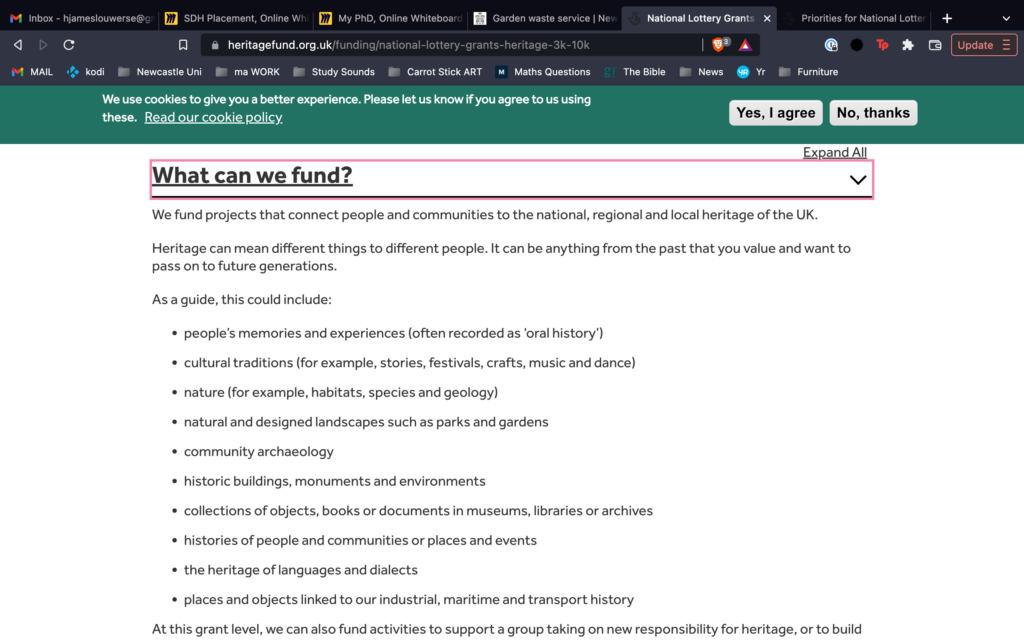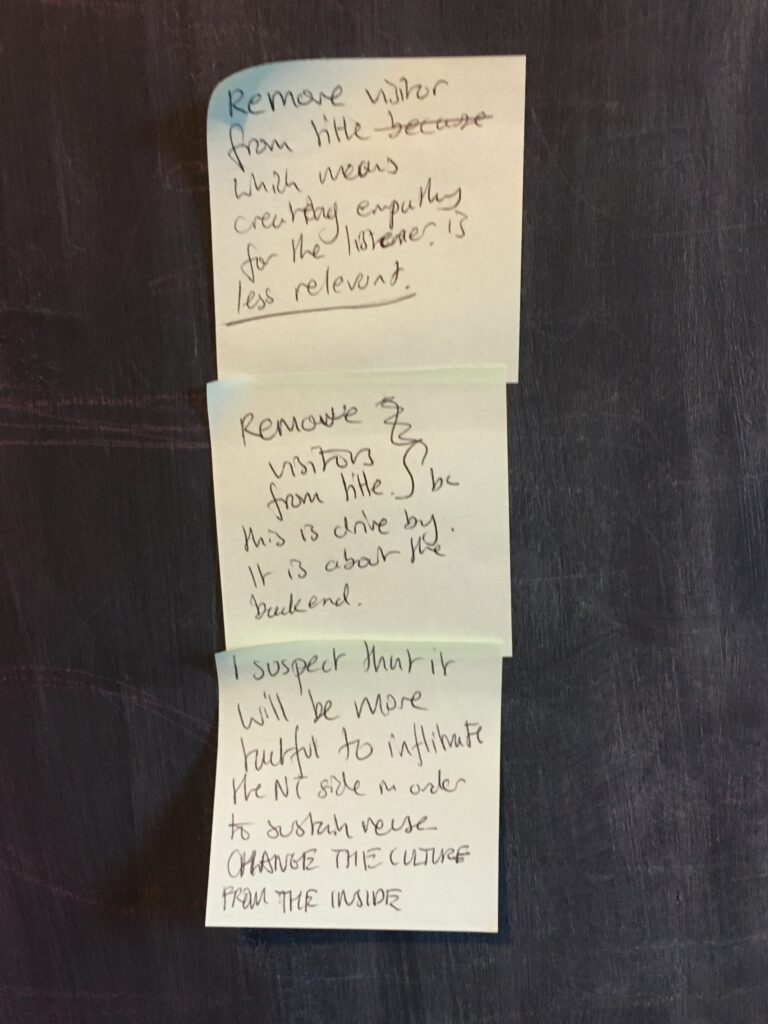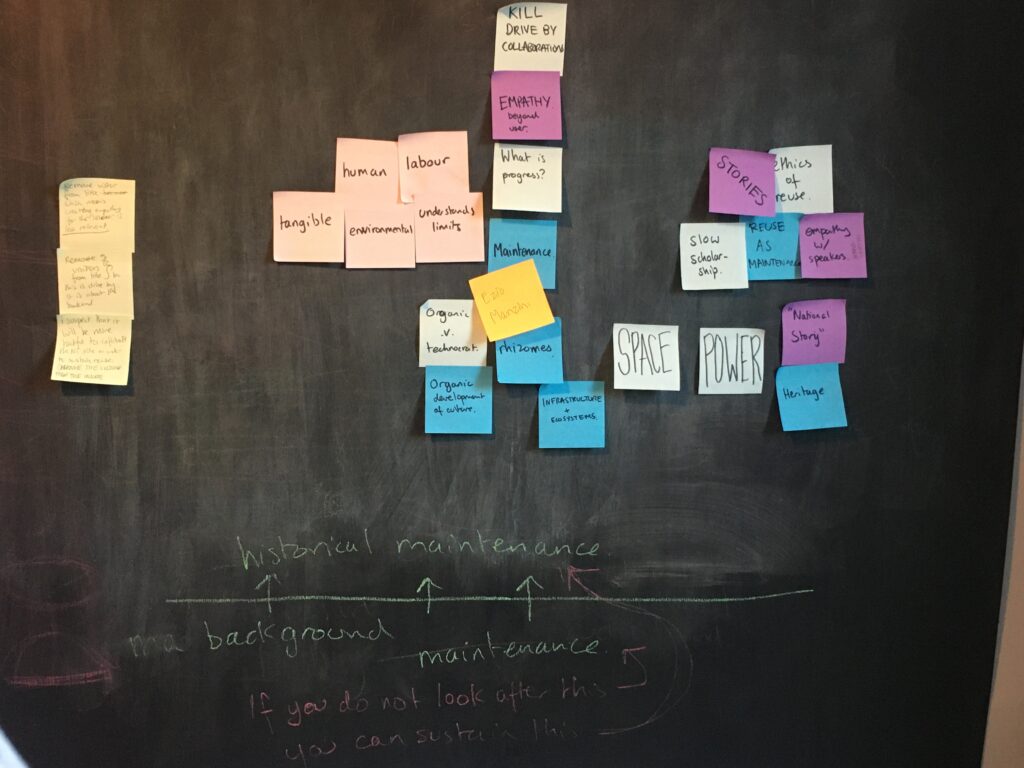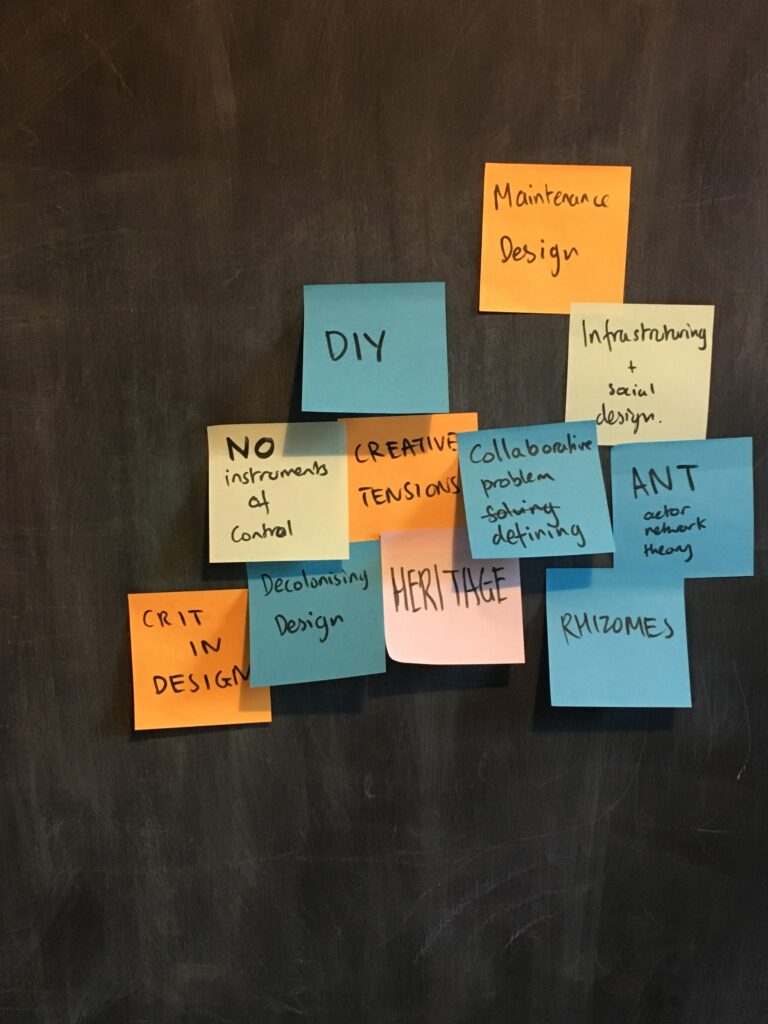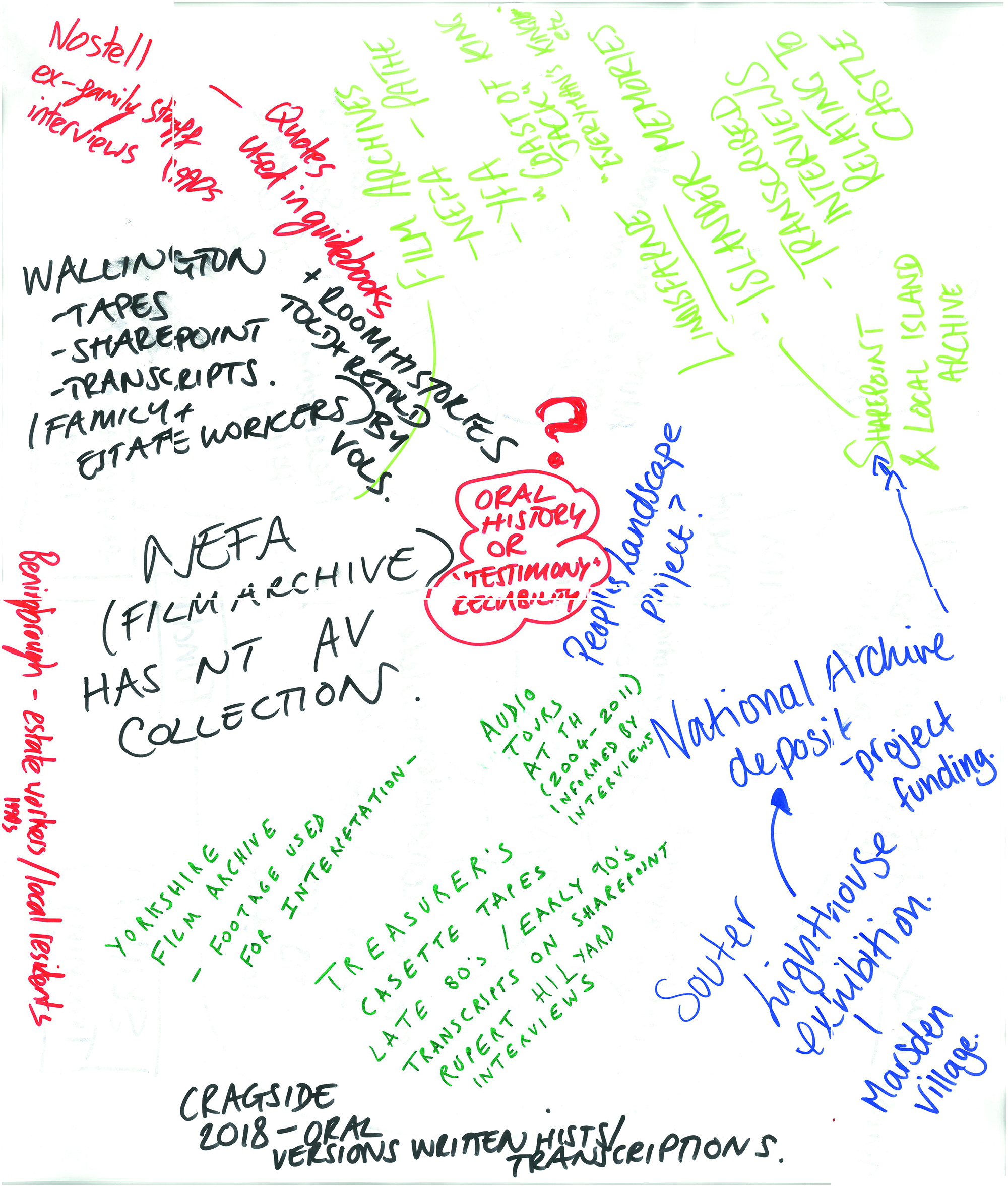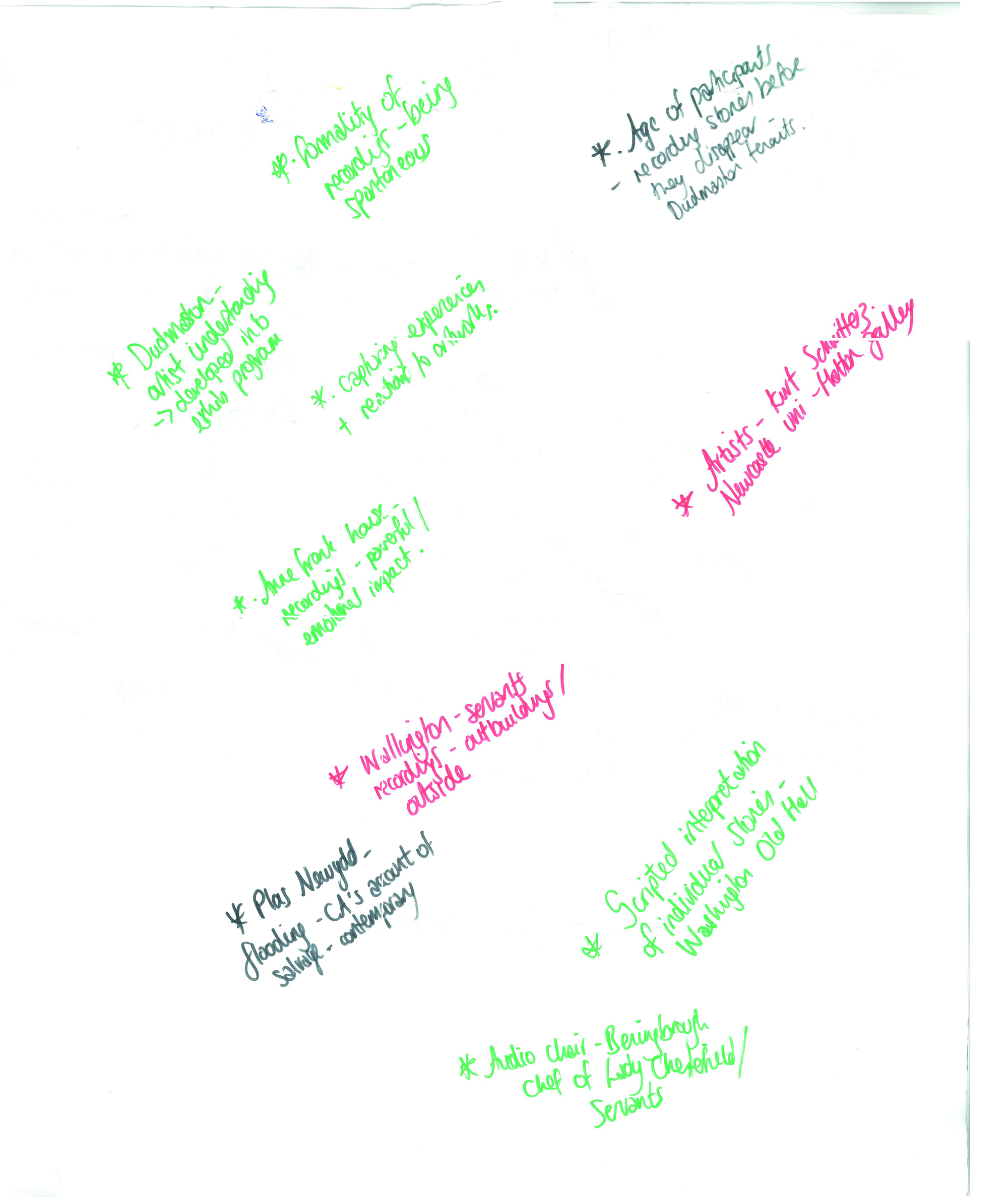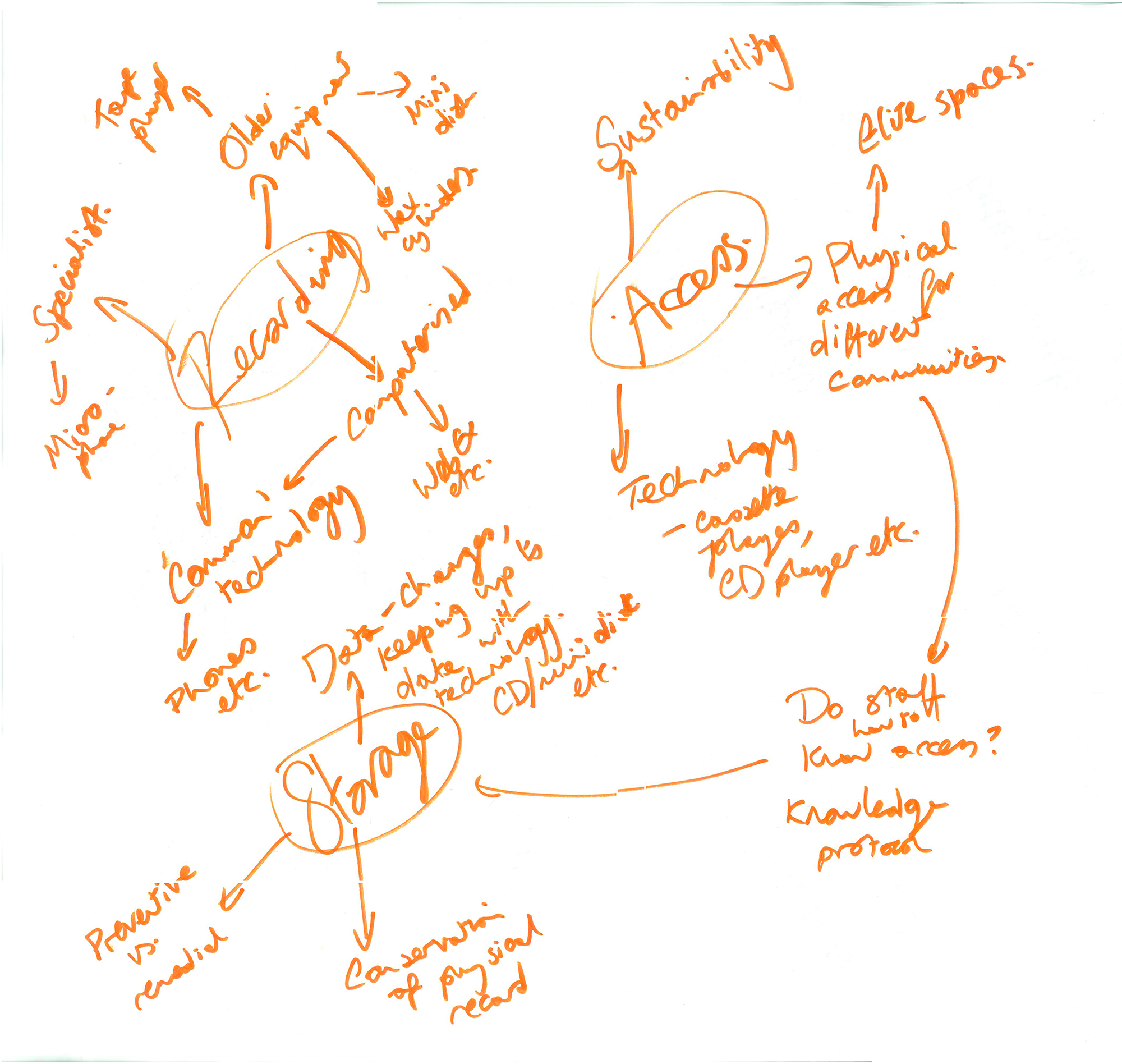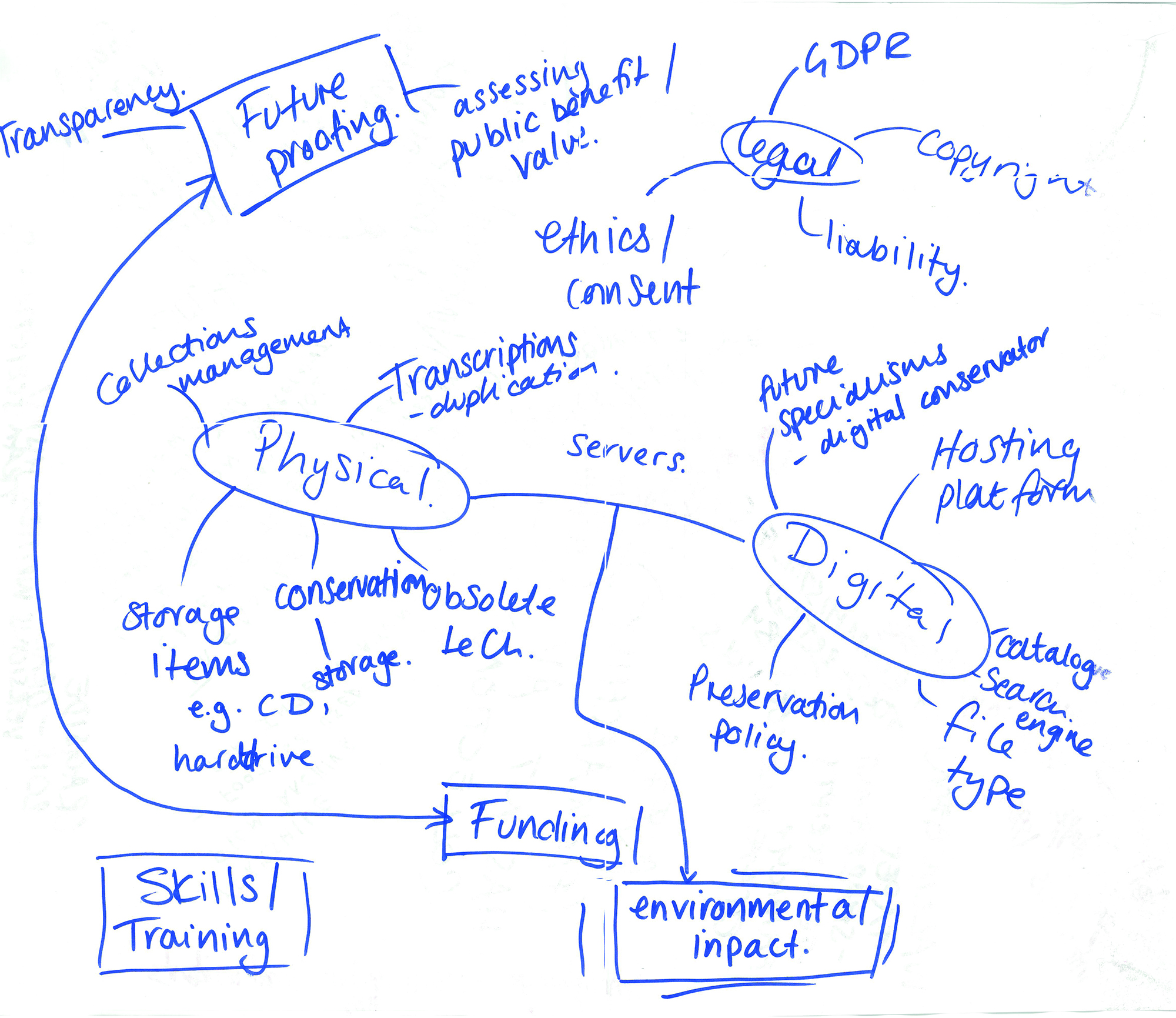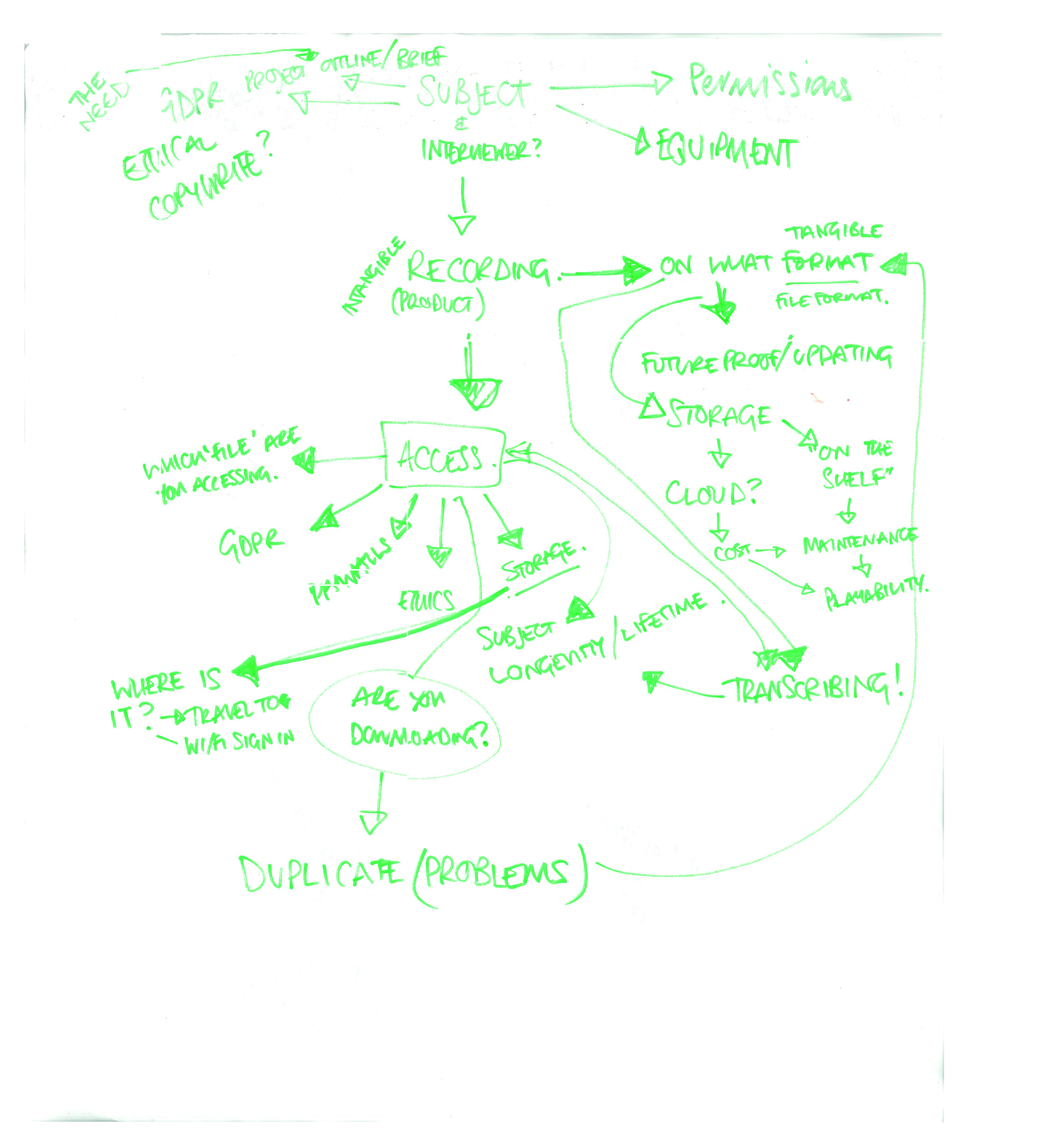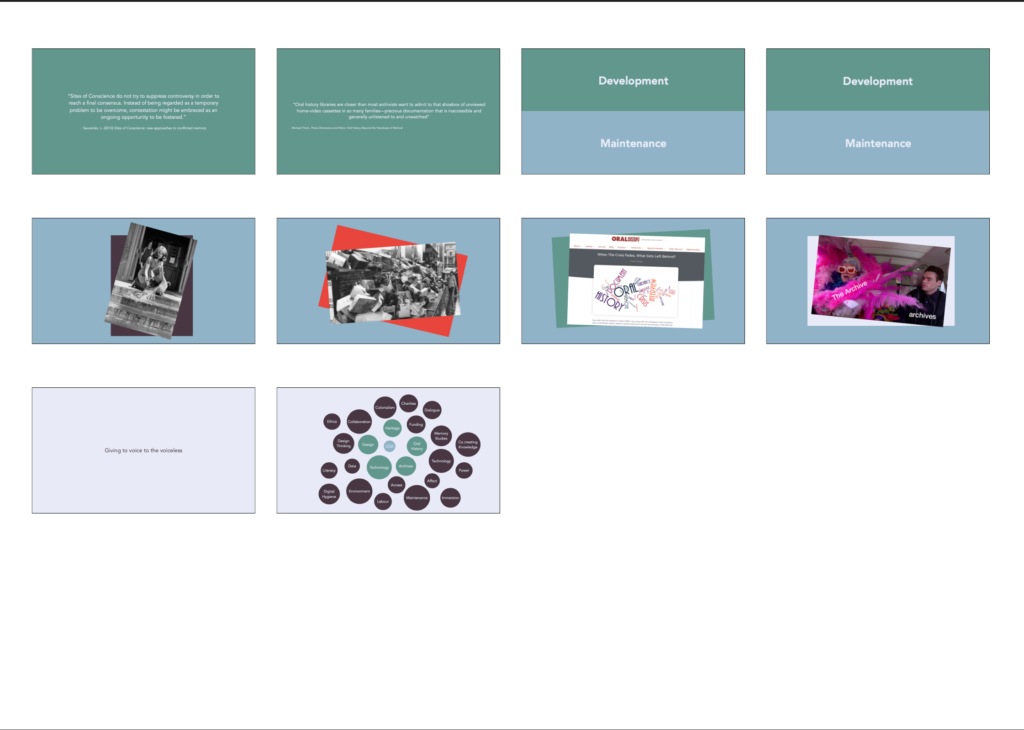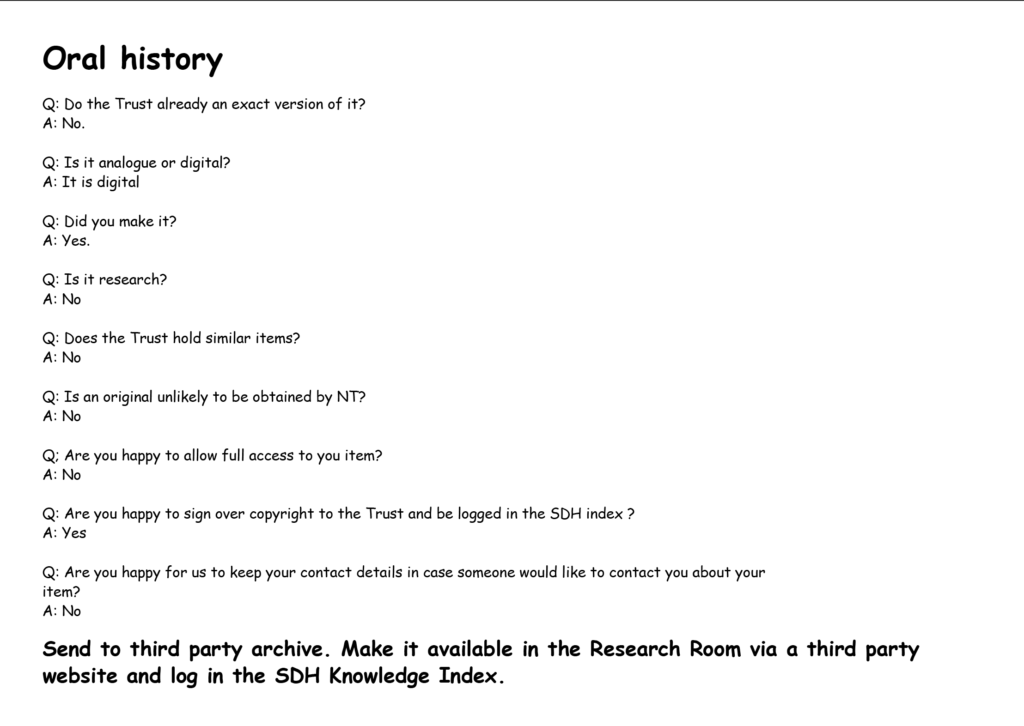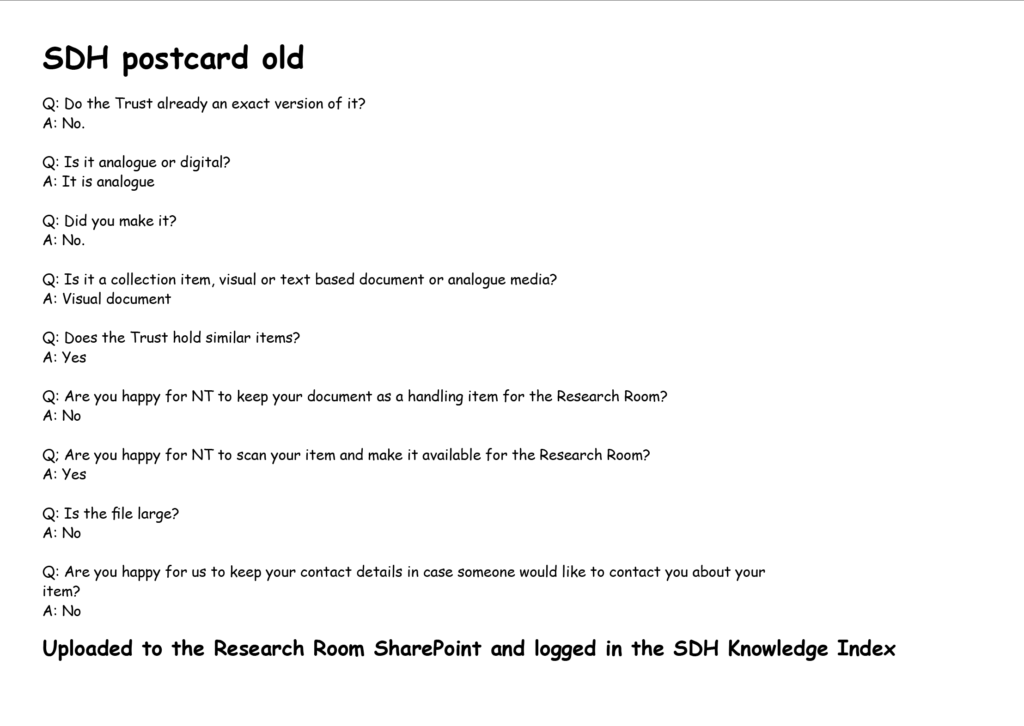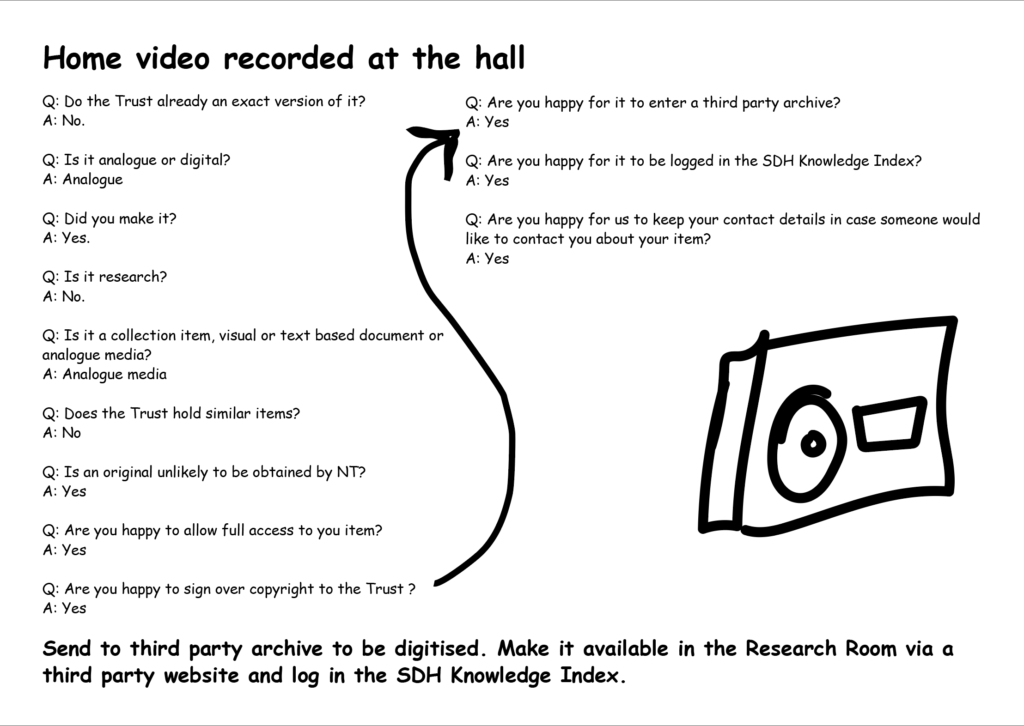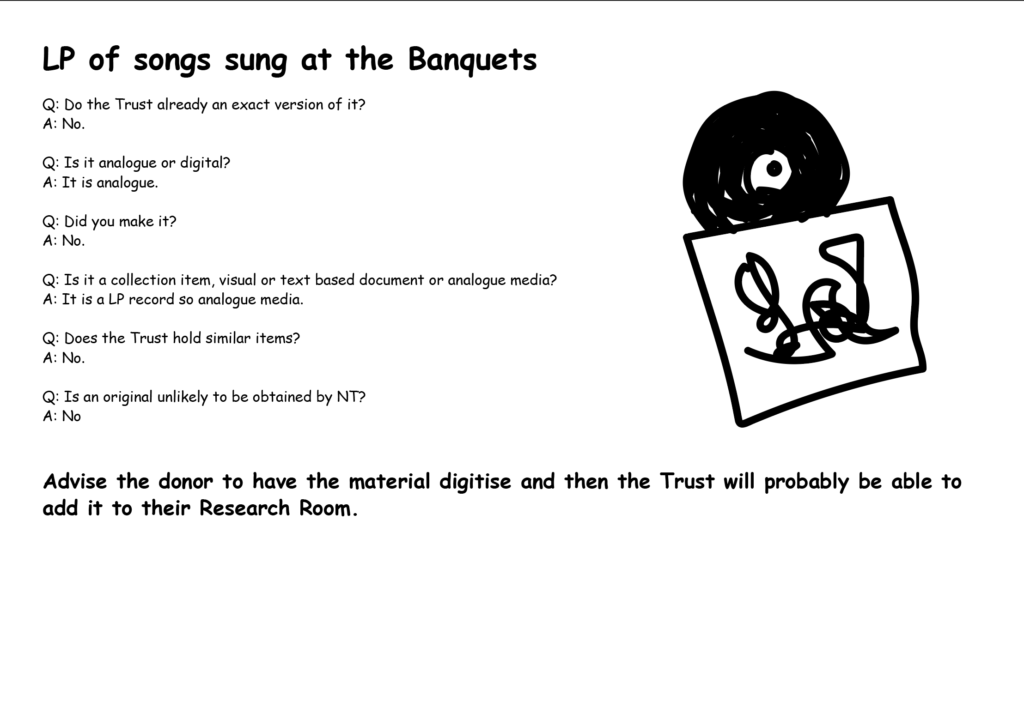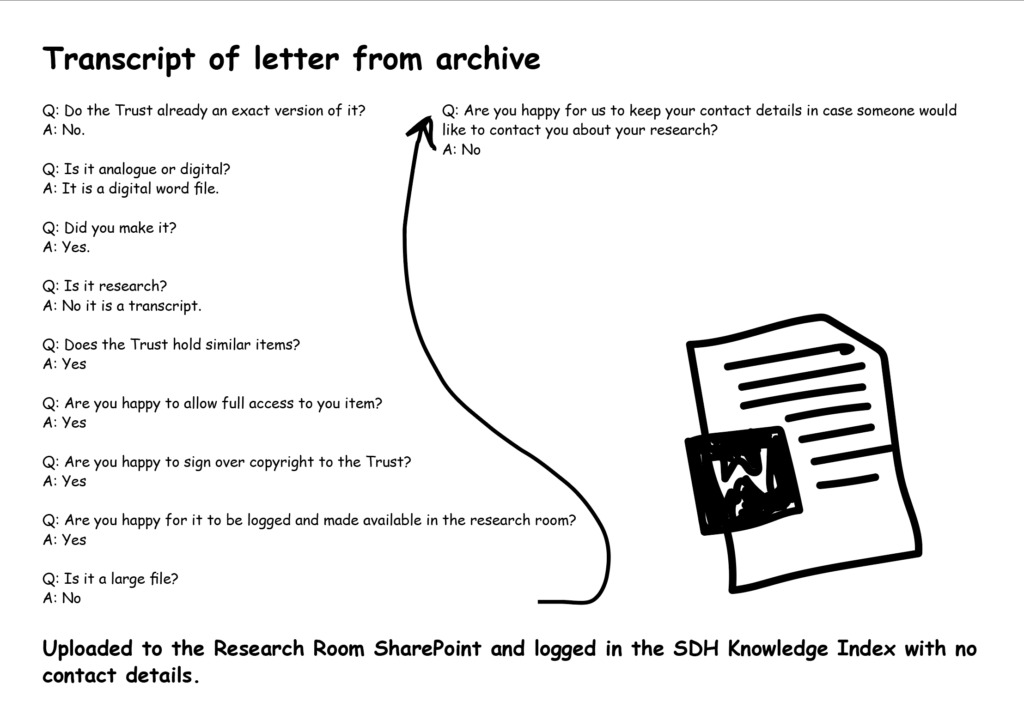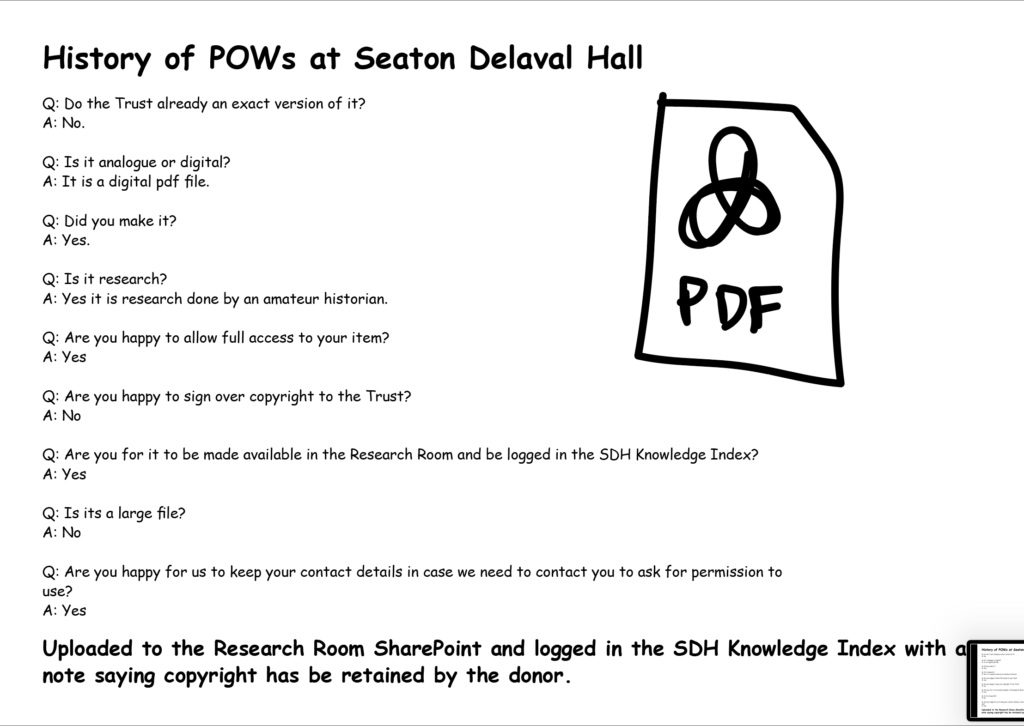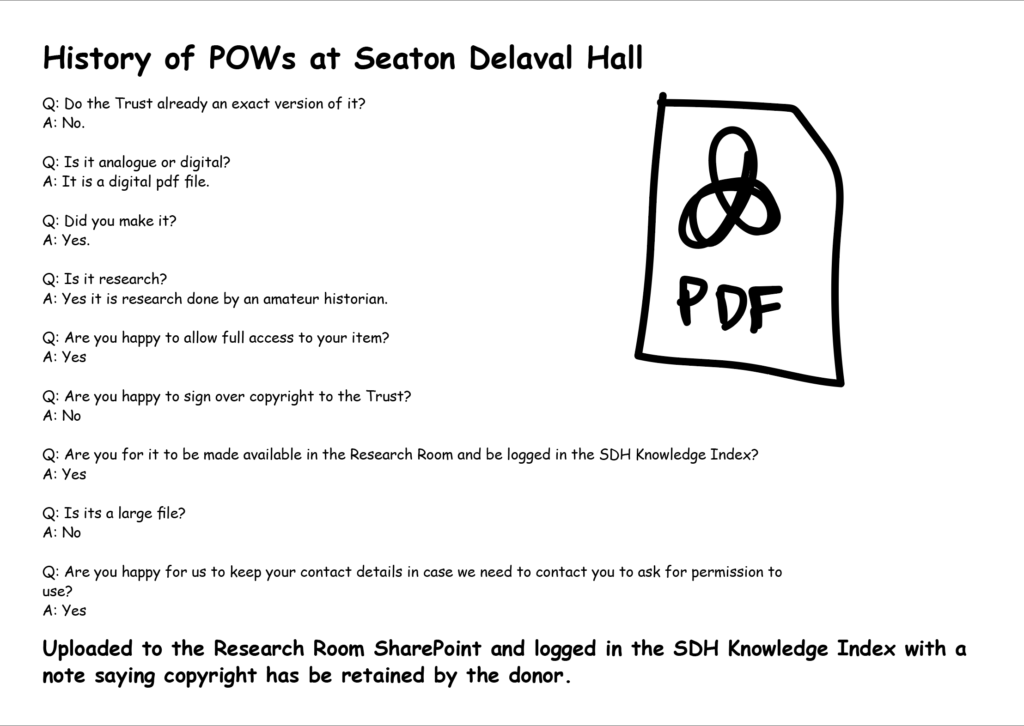Adaptive Release Report
1.0 Site
This section addresses the entire physical National Trust site, including buildings, gardens, offices, cafes, and any other facilities on site.
1.1 Unplanned damage
This section will include any damage that was done to the property in the last year that was not mentioned in the previous year’s Adaptive Release Report including the Watching Brief.
This is likely to include weather damage, accidents, and unforeseen wear and tear done to the property’s site.
1.2 Adaptive release actions
This section will include:
- Adaptive release actions on the property’s site that were noted in the previous year’s Adaptive Release Report
- Adaptive release actions on the property’s site that were planned and completed after the previous year’s Adaptive Release Report was submitted
- Any adaptive release actions on the property’s site mentioned in the previous year’s Adaptive Release Report but were not completed and the reason they were not completed
1.2.1 Opportunities of adaptive release action
This section includes the opportunities found in each of the adaptive release actions that were done on the property’s site.
1.2.2 Environmental impact of adaptive release action
This section includes how the adaptive release actions on the property’s site follow National Trust policy around climate friendly storage and the overall environmental impact of the adaptive release actions. You also need to include how the adaptive release actions influence the site in achieving carbon neutrality.
1.3 Future adaptive release plan
This section needs to include all plan adaptive release actions for the coming, the reason for the actions and predicted opportunities and improvement to environmental impact of the site.
1.3.1 Watching brief
This section includes any part of the property’s site that is not part of an adaptive release action but whose state needs to be observed as a possible area for an adaptive release action.
2.0 Digital collection
This section addresses all the digital files that are held within the National Trust IT network, which includes hardware storage and cloud space. Digital files include word documents, spreadsheets, film and audio files that have been acquired by the site. The surrogate collection is also included in this section.
2.1 Unplanned damage
This section will include any damage that was done to the digital collection in the last year that was not mentioned in the previous year’s Adaptive Release Report including the Watching Brief.
This is likely to include file migration, file corruption, dead links, and software updates that have made the files unreadable.
2.2 Adaptive release actions
This section will include:
- Adaptive release actions in the property’s digital collection that were noted in the previous year’s Adaptive Release Report
- Adaptive release actions in the property’s digital collection that were planned and completed after the previous year’s Adaptive Release Report was submitted
- Any adaptive release actions in the property’s digital collection mentioned in the previous year’s Adaptive Release Report but were not completed and the reason they were not completed
2.2.1 Opportunities of adaptive release action
This section includes the opportunities found in each of the adaptive release actions that were done in the property’s digital collection.
2.2.2 Environmental impact of adaptive release action
This section includes how the adaptive release actions in the property’s digital collection follow National Trust policy around climate friendly storage and the overall environmental impact of the adaptive release actions. You also need to include how the adaptive release actions influence the site in achieving carbon neutrality.
2.3 Future adaptive release plan
This section needs to include all plan adaptive release actions for the coming, the reason for the actions and predicted opportunities and improvement to environmental impact of the site.
2.3.1 Watching brief
This section includes any part of the property’s digital collection that is not part of an adaptive release action but whose state needs to be observed as a possible area for an adaptive release action.
3.0 Material collection
This section addresses the materiel collection that is held on site. This includes all collection object such as painting and furniture, and archived paper documents kept on site.
3.1 Unplanned damage
This section will include any damage that was done to the material collection in the last year that was not mentioned in the previous year’s Adaptive Release Report including the Watching Brief.
This is likely to include mould damage, water damage, wood worm, accidents etc.
3.2 Adaptive release actions
This section will include:
- Adaptive release actions in the property’s material collection that were noted in the previous year’s Adaptive Release Report
- Adaptive release actions in the property’s material collection that were planned and completed after the previous year’s Adaptive Release Report was submitted
- Any adaptive release actions in the property’s material collection mentioned in the previous year’s Adaptive Release Report but were not completed and the reason they were not completed
3.2.1 Opportunities of adaptive release action
This section includes the opportunities found in each of the adaptive release actions that were done in the property’s material collection.
3.2.2 Environmental impact of adaptive release action
This section includes how the adaptive release actions in the property’s material collection follow National Trust policy around climate friendly storage and the overall environmental impact of the adaptive release actions. You also need to include how the adaptive release actions influence the site in achieving carbon neutrality.
3.3 Future adaptive release plan
This section needs to include all plan adaptive release actions for the coming, the reason for the actions and predicted opportunities and improvement to environmental impact of the site.
3.3.1 Watching brief
This section includes any part of the property’s material collection that is not part of an adaptive release action but whose state needs to be observed as a possible area for an adaptive release action.
4.0 Third party collection holders
This section addresses all the partnerships with institutions that hold material donated by the site.
4.1 Current relationships
This section will include a list of all long-standing partnerships established before the submission of the previous year’s Adaptive Release Report, what material they hold and any issues or opportunities within the partnership.
4.2 New relationships
This section includes all partnerships that have been established since the submission of the previous year’s Adaptive Release Report, what material was donated and any issues or opportunities within the partnership.
4.3 Future relationships
This section includes any possible future partnerships that the property is interested in, what material they are looking to donate, and any issues or opportunities within the partnership.
